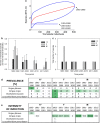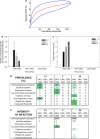Long-term dynamics of trematode infections in common birds that use farmlands as their feeding habitats
- PMID: 34353362
- PMCID: PMC8344216
- DOI: 10.1186/s13071-021-04876-2
Long-term dynamics of trematode infections in common birds that use farmlands as their feeding habitats
Abstract
Background: The biodiversity of farmland habitats is witnessing unprecedented change, mostly in declines and simplification of assemblages that were established during centuries of the use of traditional agricultural techniques. In Central Europe, conspicuous changes are evident in populations of common farmland birds, in strong contrast to forest birds in the same region. However, there is a lack of information on longitudinal changes in trematodes that are associated with common farmland birds, despite the fact that diversity of trematodes is directly linked to the preservation of long-established food webs and habitat use adaptations of their hosts.
Methods: We analyzed the population trends of trematodes for the period 1963-2020 in six bird species that use Central European farmlands as their predominant feeding habitats. Namely, we examined Falco tinnunculus, Vanellus vanellus, winter populations of Buteo buteo, Ciconia ciconia, extravilan population of Pica pica, and Asio otus, all originating from the Czech Republic.
Results: We observed dramatic population losses of all trematode species in C. ciconia and V. vanellus; the changes were less prominent in the other examined hosts. Importantly, the declines in prevalence and intensity of infection affected all previously dominant species. These included Tylodelphys excavata and Chaunocephalus ferox in C. ciconia, Lyperosomum petiolatum in P. pica, Strigea strigis in A. otus, Neodiplostomum attenuatum and Strigea falconis in B. buteo (χ2 test P < 0.001 each), and Echinoparyphium agnatum and Uvitellina adelpha in V. vanellus (completely absent in 2011-2000). In contrast, the frequency and spectrum of isolated records of trematode species did not change to any large extent except those in V. vanellus.
Conclusions: The analysis of six unrelated common bird species that use farmlands as their feeding habitats revealed a previously unreported collapse of previously dominant trematode species. The previously dominant trematode species declined in terms of both prevalence and intensity of infection. The causes of the observed declines are unclear; of note is, however, that some of the broadly used agrochemicals, such as azole fungicides, are well known for their antihelminthic activity. Further research is needed to provide direct evidence for effects of field-realistic concentrations of azole fungicides on the survival and fitness of trematodes.
Keywords: Agricultural landscapes; Biodiversity decline; Common farmland birds; Helminths; Population dynamics; Trematoda.
© 2021. The Author(s).
Conflict of interest statement
On behalf of both authors, the corresponding author states that there is no conflict of interest.
Figures







References
-
- Carlson J, Hopkins S, Bell KC, Doña J, Godfrey SS, Kwak ML, Lafferty KD, Moir ML, Speer KA, Strona G, Torchin M, Wood CL. A global parasite conservation plan. Biol Conserv. 2020;250:108596. doi: 10.1016/j.biocon.2020.108596. - DOI
-
- Reif J, Voříšek P, Šťastný K, Bejček V, Petr J. Population increase of forest birds in the Czech Republic between 1982 and 2003. Bird Study. 2007;54:248–255. doi: 10.1080/00063650709461481. - DOI
-
- Reif J, Storch D, Voříšek P, Šťastný K, Bejček V. Bird-habitat associations predict population trends in central European forest and farmland birds. Biodiv Conserv. 2008;17:3307–3319. doi: 10.1007/s10531-008-9430-4. - DOI
MeSH terms
Grants and funding
LinkOut - more resources
Full Text Sources

